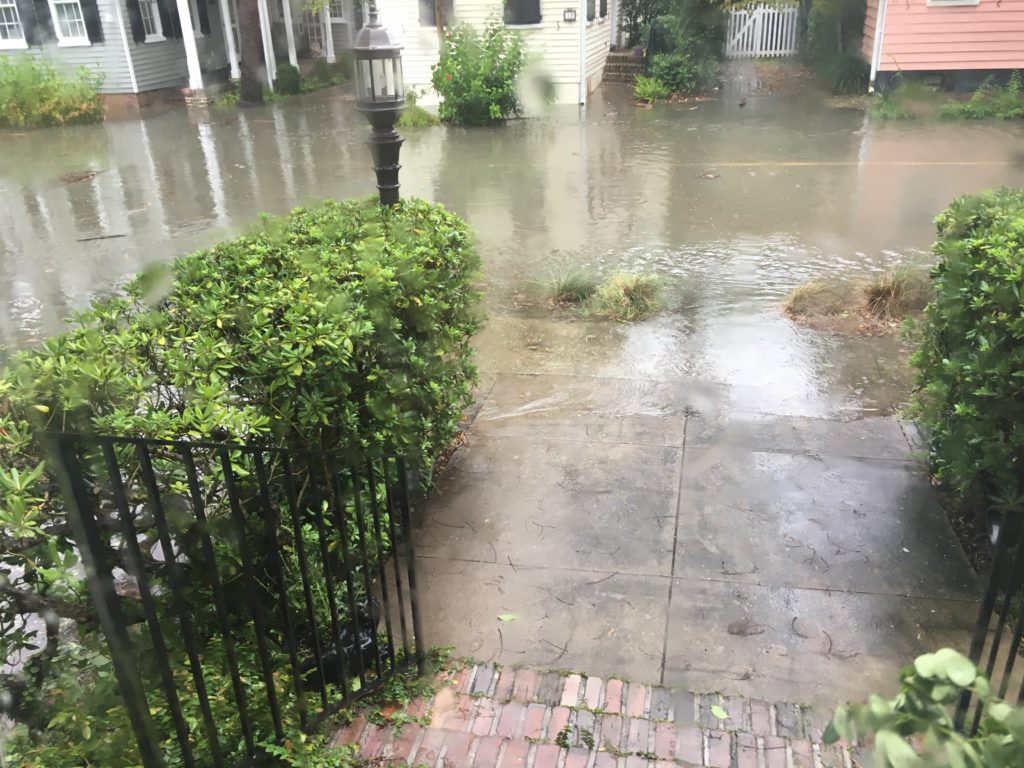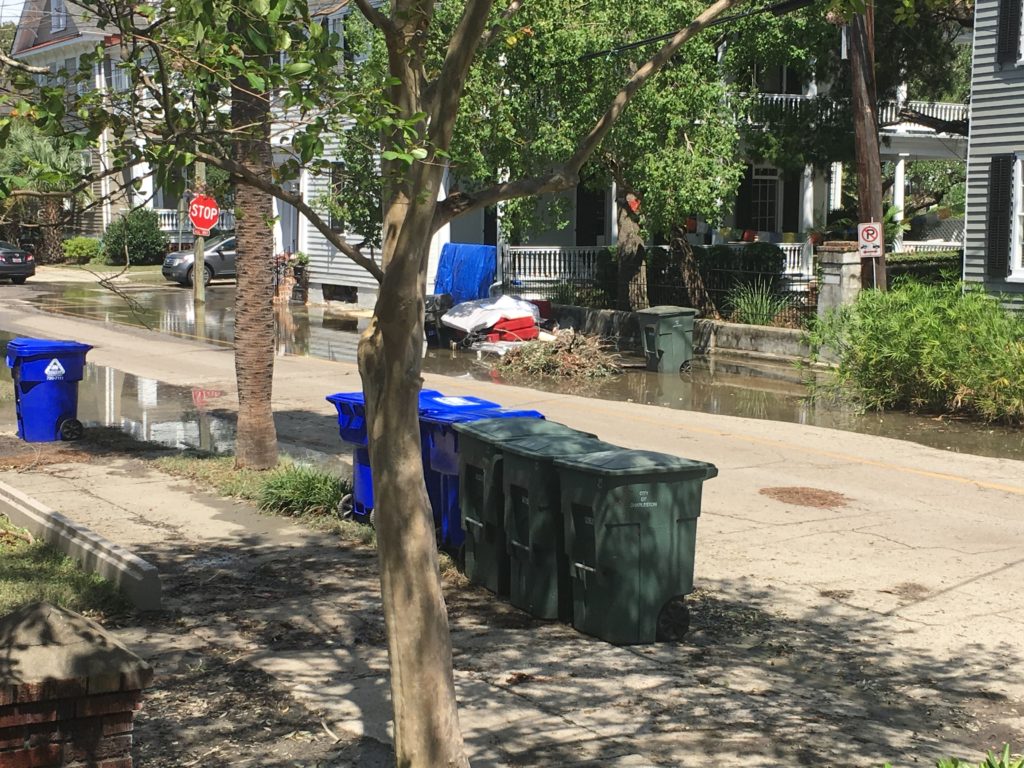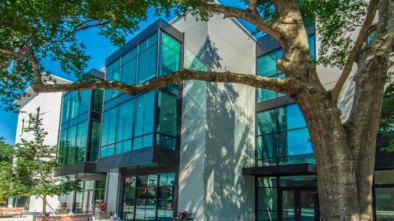Local Charleston Resident and Government Officials Express Concern About the Future of Charleston after Recent Irma Attack
During the most recent regular meeting of the Charlestowne Neighborhood Association following the passing of Tropical Storm Irma, members agreed to put off discussion of normal business matters in order to hear three speakers representing the city: Mark Wibert, a newly appointed “resilience” officer (a half-time position), Mark Matzler from the Public Works Department and Mike Seekings, city councilman representing South of Broad and Harleston Village.
- Mark Wibert spoke about Charleston’s flooding history, recent trends in rising sea levels and sunny day flooding, and big events natural disaster events including hurricanes.
- Mark Metzler spoke about improvements this year in debris cleanup after the storm and efforts to do better storm drain maintenance.
- Mike Seekings recounted his experience at the Battery at high tide as waves over washed the road. He promised to push ahead on mitigation, but as of today, it is not clear how.
The candid discussion of these three gentleman, affects of the last storm on Charleston and personal sentiment have many local residents worried about the future.

Gadsden Street – September 11 (Photo Credit: Susan Lyons)
Local Charleston resident Susan Lyons, expressed her observations and personal thoughts on the recent neighborhood association meeting, stating:
“While Hurricane Irma inflicted catastrophic damage on islands and cities south of us, many on Charleston’s Peninsula south of the Crosstown once again found our houses, yards and crawlspaces flooded, needing new duct systems, worried about too many flood insurance claims and too much financial drain, and frustrated by the city’s response.
The Post and Courier’s editorial yesterday called for bold action now, business leaders are encouraging residents to call their state and federal representatives to ask for help, and neighborhood associations have begun to focus on the problem. Communication from the mayor and city council has been thin, but this week, Councilman Mike Seekings, who represents South of Broad and Harleston Village, reported that, despite his wife’s pleas, he went to the Low Battery two hours before and through the peak of high tide at about 12:30 p.m., on Monday, September 11, and captured in pictures what he called the “tsunami” of water — some of it from as far away as the Azores — as it crashed over the sea wall. At one point, he told Charlestowne Neighborhood Association members this week, the harbor water and the Battery “were at the same elevation.” No one has been willing to say, categorically, that the whole Battery was not in jeopardy of giving way one day. Scary.
Mark Wilbert, the city’s half-time “resilience” officer, has reported that rising seas and intensified rain created high tide events on our streets 38 times in 2015, 50 times last year, and could number as many as 180 by 2040. That does not include severe storms.
We blame climate change, polar ice-melts, over-development, political myopia, bureaucratic buck-passing, and lack of money. But unless the Charleston community unites behind a dynamic and costly flood prevention and mitigation program now, homeowners and businesses will continue losing ground, literally, residents considering leaving town will sell and go, and our city will decline.
Progress has been made on some fronts. Improved check valves were said to have worked well during Irma until the Battery was breached by the surge at high tide, Mark Metzler of the city’s Public Works Department reported that cleanup of debris, storm drain maintenance, and damage surveys of individual homes all have been more efficient this year. And while work continues on the myriad of projects set forth in a 1984 plan, they are not even half finished. A new consultant is said to be coming to City Hall in January to review the entire city’s “remedies vs. threats,” a representative of the Dutch Embassy may pay a visit to Charleston to share that country’s wisdom, and some homeowners are looking into the feasibility of raising their houses.
But the big work — a new sea wall that extends to the Coast Guard Station, and raising Lockwood Drive to protect the Peninsula’s lower west side — appear to be a long way off.
City officials displayed a map of the Charleston Peninsula early on before its west side had been developed on fill, and before many of its creeks and river fingers were paved over. Striking was the picture of where flooding occurred here — water rising in most of those watery same places. “Mother Nature wants her land back,” Councilman Seekings told the CNA audience this week.
Charleston will need all the help she can get to keep her at bay. All of us will need to pitch in.”

Gadsden Street – September 13 (Photo Credit: Susan Lyons)

